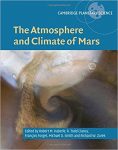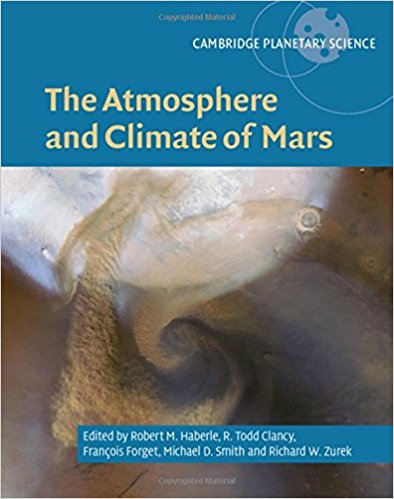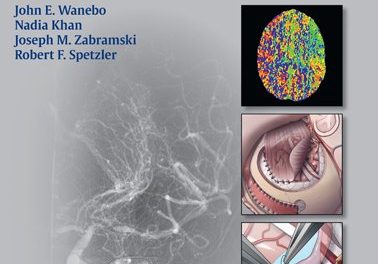 Editors: Robert M. Haberle, R.Todd Clancy, Francois Forget, Michael D. Smith, and Richard W. Zerek. (This book is part of the Cambridge Planetary Science series)
Editors: Robert M. Haberle, R.Todd Clancy, Francois Forget, Michael D. Smith, and Richard W. Zerek. (This book is part of the Cambridge Planetary Science series)
Publisher: Cambridge University Press – 574 pages
Book Review by: Sonu Chandiram
Mars is the most Earth-like of our known planets so far, and space scientists have been fascinated by the diverse features of its atmosphere, climate, and physical features ever since the initial Viking missions of the 1970s and early 1980s. As we write the review in early 2018 of this 2017 book, 12 spacecraft have already flown to this ‘Red’ planet and gathered an immense amount of data that has contributed to our understanding of Mars.
This work is a compendium of this data, and the facts and ideas that have developed from it. Sixty-three specialists in various aspects of planetary science from all over the United States and eight other countries – Belgium, Denmark, Finland, France, Granada, Russia, Spain, and the United Kingdom – authored or coauthored the 18 chapters of this book.
Presented below are the titles of its chapters which serve to provide you an overview of its contents, including its scope and depth:
- Introduction
- Understanding Mars and Its Atmosphere
- History of Mars Atmosphere Observations
- Thermal Structure and Composition
- Mars Clouds
- Radiative Process: Techniques and Applications
- The Martian Planetary Boundary Layer
- Mesoscale Meteorology
- The Global Circulation
- The Mars Dust Cycle
- The Water Cycle
- The CO2 Cycle
- Atmospheric Photochemistry
- Upper Neutral Atmosphere and Ionosphere
- Solar Wind Interaction and Atmospheric Escape
- Recent Climate Variations
- The Early Mars Climate System
- Future Prospects
The Earth and Mars have these basic similar characteristics:
- Rapid rotation
- Relatively thin atmosphere heated by radiative and convective exchange with the surface
- Seasonal progression of their climate
But Mars also presents crucial differences from the Earth “that can test our theory of numerical modeling capabilities in meaningful ways,” write the authors of the Introduction, who arte this book’s editors named above.
Mars is an interesting planet to study not just because of its similarities to our planet, but also because there is evidence to suggest that there was water – a critical component of life – very early in its planetary history, the editors assert.
“There was a time when life appears to have started on Earth, and when life as we know it may have been most likely to originate on Mars. For more than a century, radical planetary climate change and the possible origin and evolution of life have been major themes in the exploration of Mars,” they write.
One reason to believe that life once existed on Mars is that rocks of equivalent age of the Earth are still present on Mars. Plate tectonics destroyed most such rocks, and with it the record from that early geological period on Earth. On Mars, the evidence of more recent climate change also exists. “The processes and volatile inventories of the current climate gives us clues about the past,” the editors write, perhaps referring to both planets.
“The inevitable journey of humans to Mars, the most hospitable of our planetary neighbors requires a detailed knowledge of its current resources and environment,” they add. So this makes for us to read this book.
The immense amount of detailed information in this book about Mars makes it a very valuable addition to our knowledge of this neighboring planet.
Editors:
Robert M. Haberle is a senior scientist in the Space Science and Astrobiology Division at NASA Ames Research Center. His main research interests center around the atmosphere and climate of Mars: past, present, and future. He has been involved in multiple NASA missions to Mars including Pathfinder, Mars Global Surveyor, and the Mars Science Laboratory, and he has promoted and developed landed network mission concepts for atmospheric science.
Todd Clancy is a senior scientist with the Space Science Institute of Boulder, Colorado, and his research has focused on observational studies of atmospheres of the Earth, Venus, and Mars.
Francois Forget is a CNBS senior scientist in Paris, where he studies the past and present atmosphere of Mars. He has been heavily invested in the ESA missions Mars Express and Exomars 2016, and is a member of the NASA Mars Reconnaissance Orbiter (MRO) and the Insight science teams.
Michael D. Smith is a senior scientist in the Planetary Systems Laboratory of NASA’s Goddard Space Flight Center. His research interests include the meteorology and dynamics of planetary atmospheres, radiative transfer, and remote sensing techniques, and has been an active participant for more than 20 years on the science teams of eight past, current, and future spacecraft missions to Mars.
Richard W. Zurek is chief scientist for the Mars Program Office of the Jet Propulsion Laboratory (JPL), California Institute of Technology. He also serves as the project scientist for the Mars Reconnaissance Orbiter (MRO), and is involved in the development and implementation of new missions to Mars.







